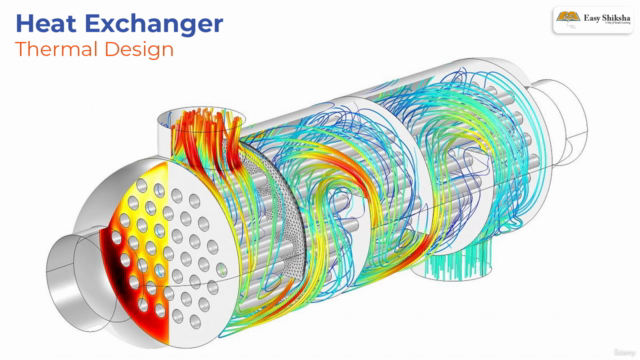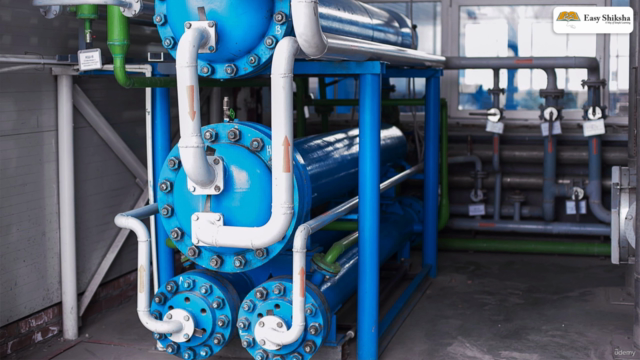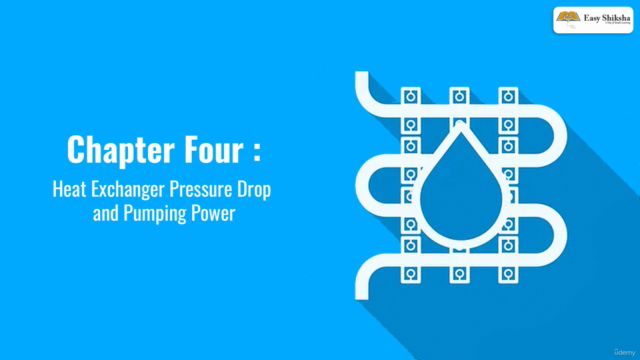HEAT EXCHANGERS : Selection, Rating, and Thermal Design- I

Why take this course?
🌟 Course Headline:
HEAT EXCHANGERS: Selection, Rating, and Thermal Design 🚀
📘 Course Description:
Embark on a deep dive into the world of heat exchangers with our comprehensive online course. Designed for mechanical engineering students and professionals in related fields such as chemical engineering, aerospace engineering, and energy engineering, this course provides a robust understanding of heat exchanger fundamentals, design principles, and practical applications across various industries.
Throughout the course, you will explore the classification of heat exchangers, understand the selection criteria, master rating methods, delve into thermal design, and analyze performance. We'll cover everything from the basics of heat transfer mechanisms to advanced topics like micro/nano heat transfer and fouling.
🔍 What You'll Learn:
1. Classification of Heat Exchangers 📚
- Introduction: The starting point for understanding heat exchangers.
- Recuperation vs Regeneration: Discover the difference and when to use each.
- Transfer Processes: Learn about conduction, convection, and radiation.
- Geometry of Construction: Understand the various designs and their applications.
- Heat Transfer Mechanisms: Explore convective and conductive heat transfer.
- Flow Arrangements: Study the different flow patterns and their impact on performance.
- Applications: Find out how heat exchangers are used in everyday processes.
- Selection of Heat Exchangers: Master the criteria for choosing the right heat exchanger.
2. Basic Design Methods of Heat Exchangers 📐
- Introduction: Get to grips with the design process.
- Arrangement of Flow Paths in Heat Exchangers: Learn how to set up the flow paths effectively.
- Basic Equations in Design: Dive into the fundamental equations that govern heat exchanger design.
- Overall Heat Transfer Coefficient: Understand its calculation and significance.
- LMTD Method for Heat Exchanger Analysis: Learn this classic method for analyzing heat exchangers.
- The ε-NTU Method for Heat Exchanger Analysis: Grasp this powerful tool for predicting heat exchanger performance.
- Heat Exchanger Design Calculation: Apply the methods learned to perform actual design calculations.
- Variable Overall Heat Transfer Coefficient: Tackle designs with variable heat transfer coefficients.
- Heat Exchanger Design Methodology: Put it all together in a cohesive design approach.
3. Forced Convection Correlations for the Single-Phase Side of Heat Exchangers 🌬️
- Introduction: A primer on forced convection in heat exchangers.
- Laminar Forced Convection: Learn the basics of laminar flow and its heat transfer characteristics.
- Turbulent Forced Convection: Understand the complexities of turbulent flow.
- Effect of Variable Physical Properties: Explore how variable properties affect heat transfer.
- Heat Transfer from Smooth-Tube Bundles: Study the heat transfer mechanisms in tube bundles.
- Heat Transfer in Helical Coils and Spirals: Learn about the unique heat transfer characteristics of helical and spiral coils.
- Heat Transfer in Bends: Discover how bends affect heat transfer.
- Summary of Forced Convection in Straight Ducts: Wrap up the key points on forced convection.
- Heat Transfer in Bends and Fittings: Detail the impact of fittings on overall heat transfer.
4. Double-Pipe Heat Exchangers 🔄
- Introduction: An introduction to double-pipe heat exchangers and their significance.
- Thermal and Hydraulic Design of Inner Tube: Learn how to design the inner tube for optimal thermal and hydraulic performance.
- Thermal and Hydraulic Analysis of Annulus: Understand the annulus's role in heat transfer and flow dynamics.
- Parallel–Series Arrangements of Hairpins: Study the configuration options for double-pipe heat exchangers.
- Total Pressure Drop: Learn how to calculate and minimize pressure drop.
- Design and Operational Features: Identify key design features that ensure efficient operation.
5. Advanced Topics 💡
- Micro/Nano Heat Transfer: Explore the cutting-edge field of micro and nano heat transfer.
- Fouling: Learn about fouling, its impacts on performance, and strategies to mitigate it.
By the end of this course, you will have a well-rounded understanding of heat exchangers, from their fundamental principles to advanced design considerations. Whether you're an aspiring engineer or a professional looking to expand your knowledge, this course will equip you with the skills and insights needed to excel in the field of thermal science.
👩🏫 Who Should Take This Course:
- Mechanical Engineering Students
- Chemical Engineering Students
- Aerospace Engineering Students
- Energy Engineers
- HVAC Designers
- Process Engineers
- Anyone interested in deepening their knowledge of heat exchangers and their applications.
Enroll now to unlock the full potential of your engineering expertise with our comprehensive HEAT EXCHANGERS: Selection, Rating, and Thermal Design course! 🎓
Ready to master the art and science of heat exchangers? Click "Enroll Now" to secure your spot and embark on an educational journey that will transform your understanding of thermal systems. 🚀
Course Gallery




Loading charts...